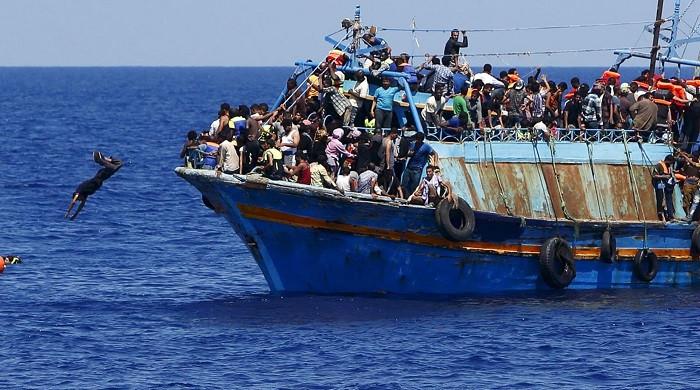WATCH: Ginormous carcass of 42-foot blue whale found off Pakistan coast
Coastal authorities have alerted local residents not to go close to ballooning carcass of the blue whale as it can explode
May 26, 2023
A ginormous carcass of an estimated 42-foot blue whale is drifting fast towards Balochistan’s coastal town of Jiwani, which marine biologists Friday feared could pose a serious health hazard to the local population.
Coastal authorities have alerted the local residents not to go close to the ballooning carcass of the blue whale, one of the largest animals on the planet, because it is in the bloat stage of decay and can explode.
The whale — dead for nearly eight to 10 days — can burst anytime soon releasing putrid stench and decomposing entrails in the environment.
World Wild Life Fund (WWF) Pakistan marine biologists were the first responders to the call from the local authorities. In their initial examination, they measured the whale and collected blood and tissue samples to run various tests to determine the species and possible cause of death.
The carcass is adrift near the coast of Jiwani, a commercial port located along the Gulf of Oman in the Gwadar District of the Balochistan province, and can wash up on the beach in a matter of hours if not days, authorities said.
The blue whale is the largest animal of all time and has long fascinated biologists. Strangely, despite their immense size, feed on tiny prey.
As filter feeders, they take huge amounts of water into their mouths and strain out prey including shrimp-like krill and other zooplankton using baleen plates made of keratin, the same material found in fingernails.
During feeding dives, the whale exhibited extremely low heart rates, typically of four to eight beats per minute and as low as two.
After surfacing to breathe following foraging dives, the whale had heart rates of 25 to 37 beats per minute.
Blue whales, found in all the world’s oceans, are listed as endangered thanks to 20th-century whaling that drove them nearly to extinction. There are about 10,000 worldwide. They reach up to about 98 feet (30 meters) long and 180 tons.
Blue whales face a gauntlet of risks in the ocean from ship strikes to human noise, and for an animal living on the knife-edge these dense patches of prey are critical to put on mass and ultimately reproduce, according to experts.











